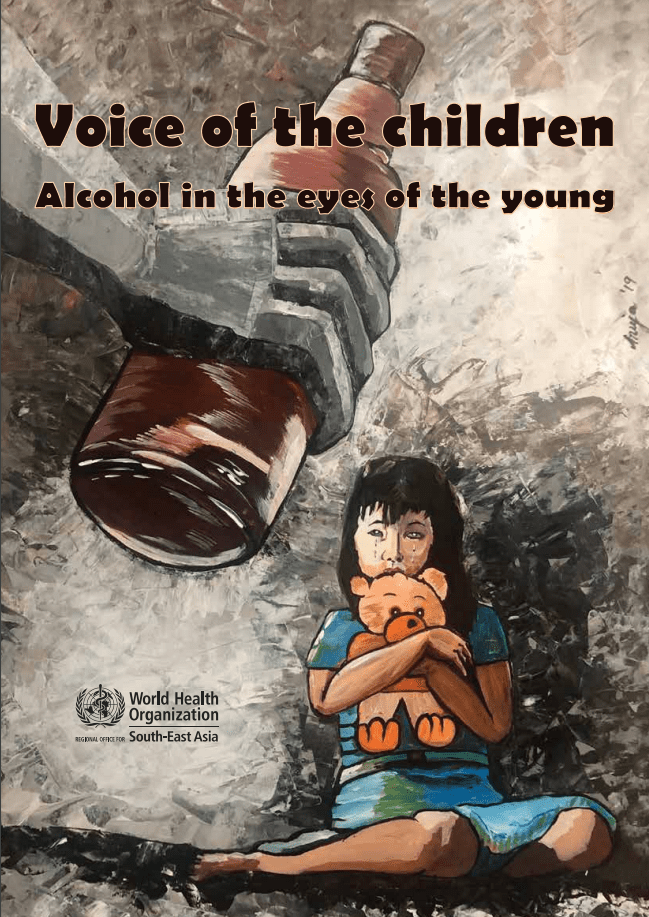WHO SEARO Publication: Alcohol in the Eyes of Kids
The World Health Organization Regional Office for South-East Asia has published a booklet on how children see alcohol.
In the discourse on alcohol, the voice that is missing is that of the young. It is their voice that we need to hear. It is they who are affected most. It is their future at stake,” writes Dr Poonam Khetrapal Singh, Regional Director, WHO South-East Asia.
The publication contains pictures drawn by children on how they see alcohol. The drawings follow three main themes.
- Listen to our voices, stop alcohol consumption,
- Effects and consequences,
- Messages on action for an alcohol-free world.
The first section contains drawings depicting:
- Alcohol: a weapon of mass destruction,
- Nothing about alcohol is healthy,
- Alcohol takes control of our body, darkens our heart and soul,
- Alcohol kills our capacity to think clearly,
- Using alcohol and driving: fast lane to death and injuries,
- Alcohol is a very effective dissolving agent. It dissolves families, jobs, dreams, marriages, friendships, but NEVER dissolves problems,
- The alcohol monster devours it all.
The second section on effects and consequences highlights that alcohol,
- kills,
- is the leading cause of road accidents,
- harms the liver,
- causes cancer,
- can lead to depression or suicide,
- can be poisonous,
- destroys homes,
- leads to domestic violence, sexual abuse and increase in crime.
The third section on what actions children suggest for an alcohol-free world contains drawings with these messages:
- Develop and support alcohol-free environments,
- Don’t start. It leads you nowhere,
- Knowledge is power! Stay informed, stay safe,
- Be a role-model, say NO to alcohol,
- Alcohol-free families, happier families,
- Break-up with the bottle, not with the family,
- Let us actively engage in creating better lives for ourselves,
- Make a start, change your mindset,
- We can, we will: bottle the alcohol devil.
The increasing trend of alcohol consumption in the South-East Asian Region is affecting our young people more than others. Across the Region, the [alcohol] causes more than 650,000 deaths each year. Worldwide, more than a quarter (26.5%) of all 15–19-year- olds are current [alcohol users], amounting to 155 million adolescents, a matter of grave concern.
People of younger ages are disproportionately affected by alcohol compared to older persons, with 13.5% of all deaths among those who are 20–39 years of age attributed to alcohol.
Beyond the statistics, and the fact that [alcohol] is a risk factor for many diseases and injury conditions, there are untold stories of the loss of loved ones and income, of family break-up and neglected children, of depression and loneliness, of violence and abuse.
[…] alcohol also leads to risky behaviours among the youth, including drink-driving, fighting, drowning, self-harm and suicide.
As the young are among the most affected, they must have a voice in shaping the response to this key public health issue,” writes Dr Poonam Khetrapal Singh, Regional Director, WHO South-East Asia.
—
Suggested citation
Voice of the Children: Alcohol in the eyes of the young. New Delhi: World Health Organization, Regional Office for South-East Asia; 2019. Licence: CC BY-NC-SA 3.0 IGO.
